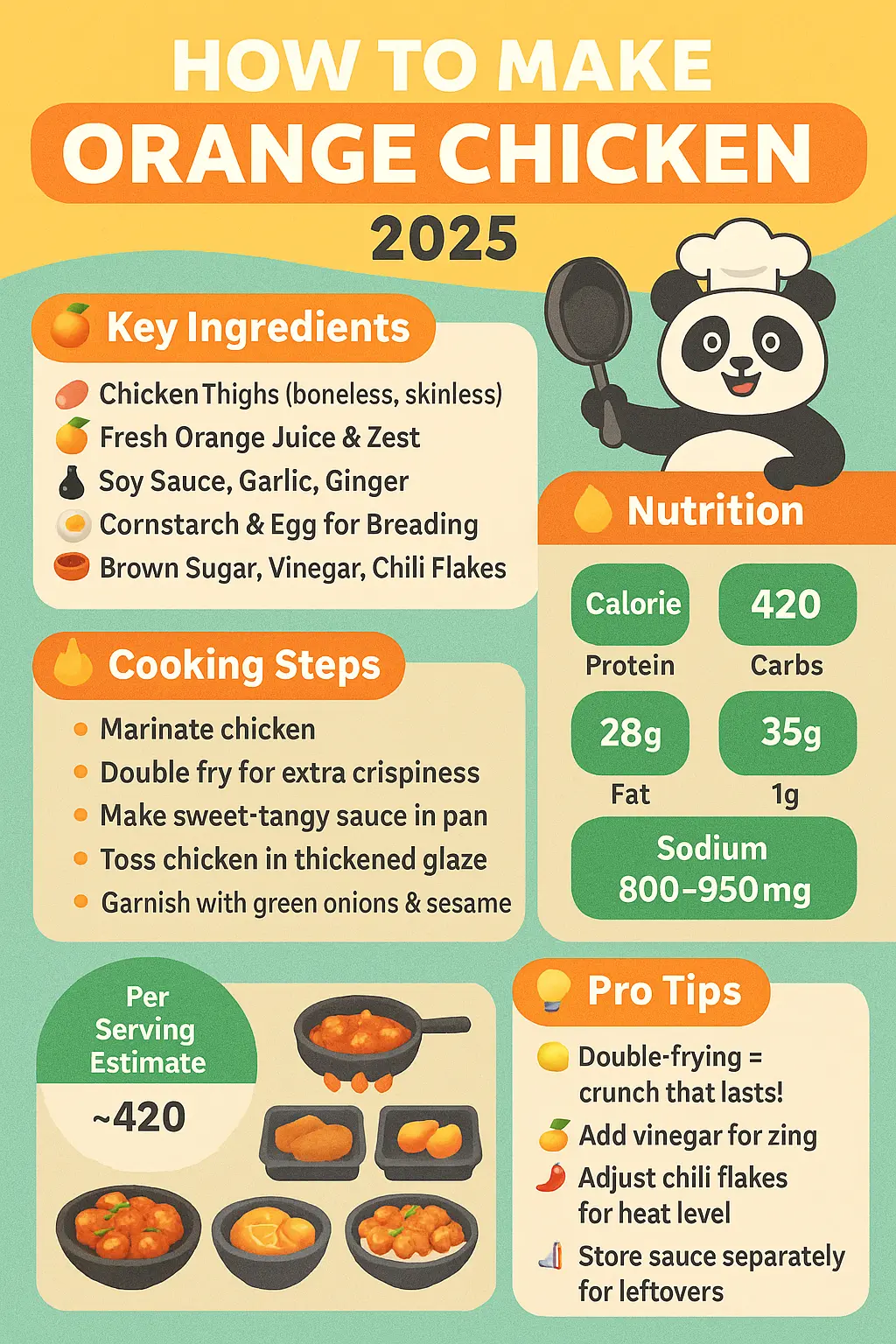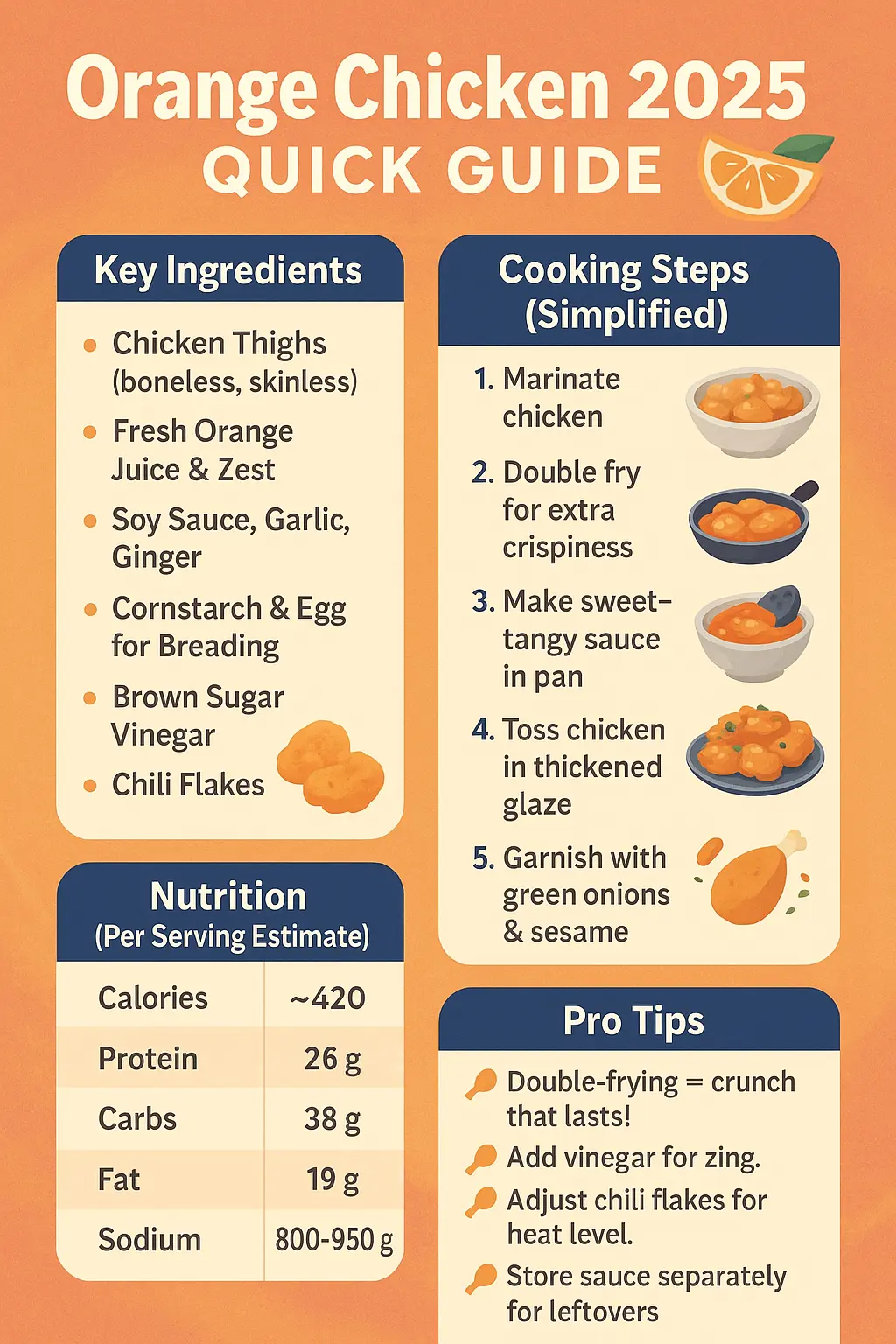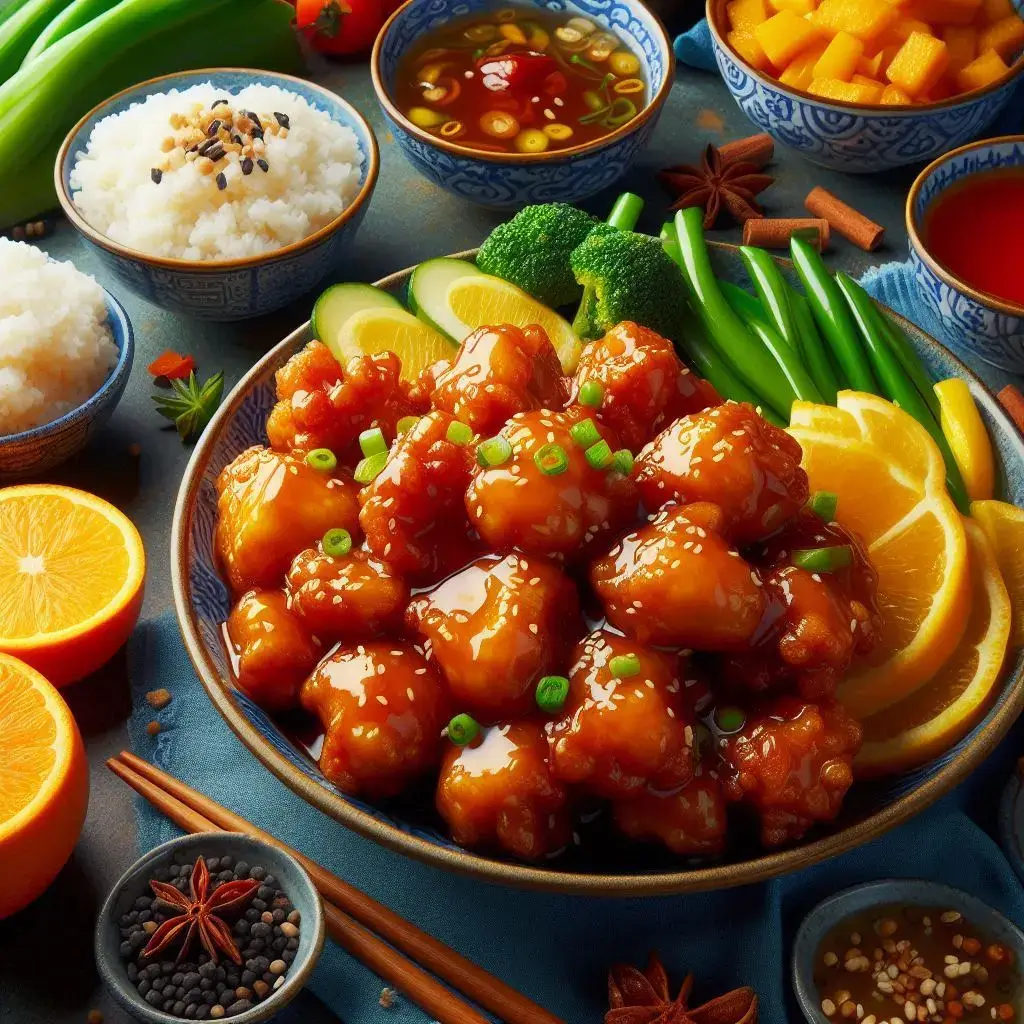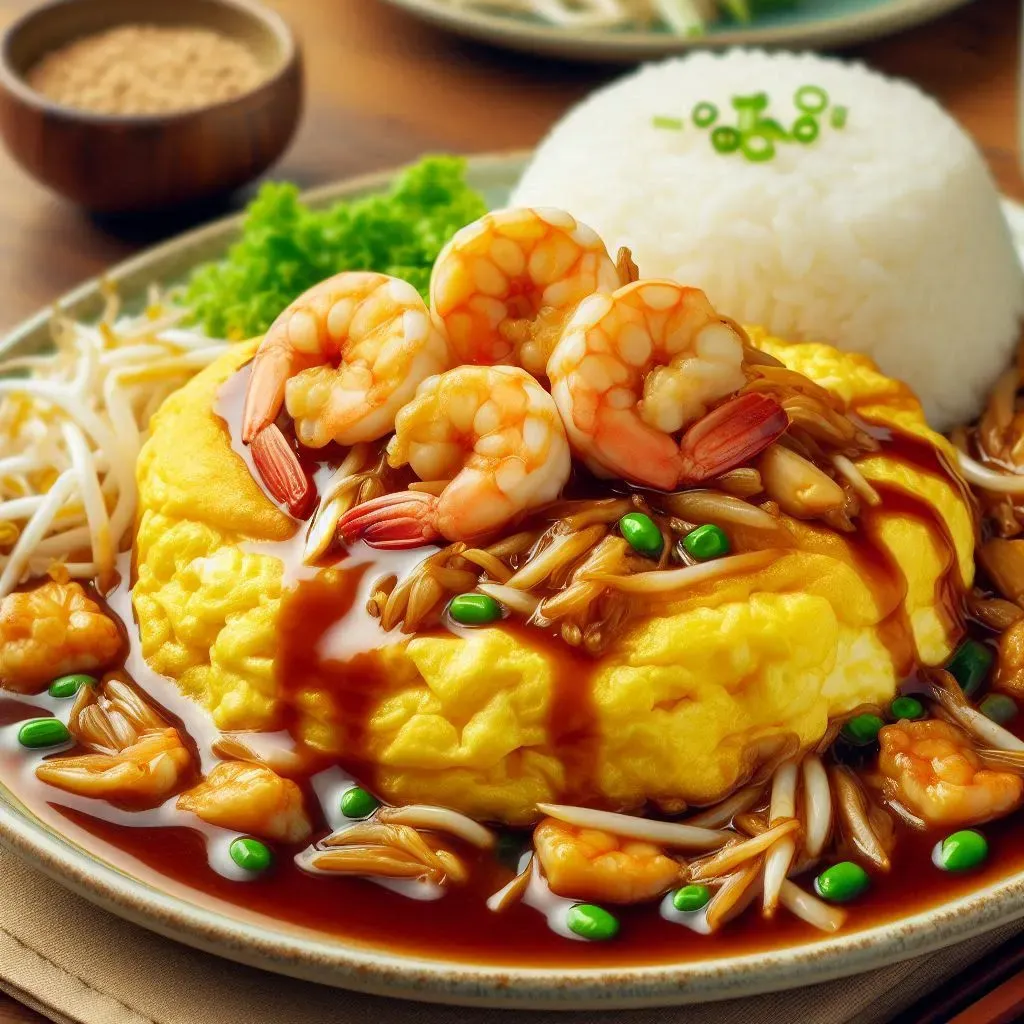
Table of Contents
📘 1. Introduction: Why Gravy Makes or Breaks Egg Foo Young
Egg Foo Young — a crispy, fluffy Chinese-American omelet — is already a comfort food icon. But the gravy? That’s where the magic happens. A silky, umami-rich, savory sauce draped over the omelet can elevate your dish from “meh” to “magnificent.”
In 2025, the revival of takeout-style classics has brought renewed attention to mastering Egg Foo Young gravy at home. Whether you’re re-creating nostalgic flavors from your favorite Chinese restaurant or modernizing the sauce for dietary needs, this guide breaks it all down — step-by-step.
What You’ll Learn in This Guide:
| Section | Key Takeaways |
|---|---|
| 🌍 History | How this dish traveled from Canton to Chicago |
| 🧪 Ingredient Science | What makes gravy thick, glossy, and flavorful |
| 🍲 Gravy Techniques | Cornstarch slurries vs. roux bases |
| 🧂 Seasoning Formulas | Balancing sweet, salty, and umami |
| 🌱 Vegan & Low-Sodium Swaps | Easy modifications for special diets |
| 🍽️ Pairing Suggestions | Side dishes that work beautifully |
| 🛍️ Shopping & Storage | Cost-effective tips for ingredients & leftovers |
| 📊 Nutrition & Macros | How your gravy stacks up health-wise |
Let’s start with where this delicious brown sauce came from…
🏯 2. A Brief History of Egg Foo Young & Its Signature Gravy
Egg Foo Young is a fusion dish rooted in Cantonese cuisine, where egg-based dishes like fu yung dan (芙蓉蛋) originated centuries ago. When Chinese immigrants settled in North America in the 19th century, they adapted their food to local tastes — resulting in the crispy, pan-fried version we now know.
📍 From Hong Kong to St. Louis
- Original version: Fluffy scrambled egg with vegetables and seafood.
- American evolution: Heavier frying, thicker gravies, and additions like ham or bean sprouts.
Why the gravy? U.S. diners in the mid-1900s expected sauced dishes. Gravy was added to suit that palate, especially in the Midwest and South.
| Timeline of Gravy Evolution |
|---|
| 🐉 1800s |
| 🚢 1920s |
| 🍽️ 1950s |
| 🌐 2000s |
| 📈 2020s–2025 |
🧪 3. Ingredient Science: What Makes a Perfect Egg Foo Young Gravy?
Your gravy must have a few essential traits:
- Glossy finish ✨
- Deep umami flavor 🍜
- Light viscosity (not gluey!) 🥄
- Balanced seasoning 🧂
Let’s break down the science behind each ingredient category:
🔬 Key Gravy Components Breakdown
| Component | Function | Options |
|---|---|---|
| Liquid base | Main volume + umami | Chicken broth, beef stock, mushroom stock (vegan) |
| Thickener | Gloss and texture | Cornstarch (classic), potato starch, arrowroot |
| Flavor enhancers | Umami and salt | Soy sauce, oyster sauce, fish sauce, tamari |
| Aromatics | Depth | Garlic, ginger, green onion |
| Acidity | Brightens flavor | Rice vinegar, Shaoxing wine |
| Sweetener | Balances salt | Sugar, mirin, honey |
🧪 Gravy Texture Test Form
Use this form to help you track & optimize your gravy texture during testing:
| Gravy Texture Testing Form |
|---|
| 📆 Date Cooked: __________ |
| 🧪 Base Used: ____________ |
| 💧 Thickness Level: [ ] Too Thin [ ] Just Right [ ] Too Thick |
| ✨ Glossiness: [ ] Matte [ ] Shiny [ ] Over-gelled |
| 🌶️ Flavor Profile: __________________________________ |
| 🧂 Salt Balance: [ ] Bland [ ] Perfect [ ] Salty |
| 🔁 Improvements for Next Time: _______________________ |
🥣 Gravy Ratios Cheat Sheet
| Ingredient | Standard Ratio (per 1 cup liquid) |
|---|---|
| Soy sauce | 1 tbsp |
| Oyster sauce | 2 tsp |
| Sugar | 1 tsp |
| Cornstarch slurry (1:1 w/ water) | 1 tbsp |
| Garlic (minced) | ½ tsp |
| Ginger (minced) | ½ tsp |
✅ Pro Tip: Always mix your cornstarch slurry right before adding to avoid separation.
🧪 4. The Science Behind a Great Egg Foo Young Gravy
To perfect the gravy that complements Egg Foo Young, we must go beyond taste and texture — we need to understand the chemistry of flavor.
🍶 4.1 The Umami Effect: Why It Tastes So Good
Egg Foo Young gravy delivers a punch of umami, the “fifth taste,” thanks to its common ingredients:
| Ingredient | Umami Compound | Function |
|---|---|---|
| Soy Sauce | Glutamates | Deepens savory base |
| Mushrooms (optional) | Guanylate | Enhances umami synergy with soy |
| Broth (chicken or vegetable) | Inosinate (chicken), Glutamates (veg) | Adds richness |
Pro Tip 💡: Combining glutamates + nucleotides (like in soy sauce + broth) creates a synergistic umami explosion.
🌡️ 4.2 Viscosity: The Role of Cornstarch
To achieve the perfect gravy thickness, cornstarch is key:
| Ratio | Consistency | Best Use |
|---|---|---|
| 1 tsp cornstarch : 1 cup liquid | Light and pourable | Classic gravy |
| 1 tbsp cornstarch : 1 cup liquid | Medium-bodied | For clingy, glossy sauce |
| 2 tbsp cornstarch : 1 cup liquid | Thick, glossy | Great for takeout-style gravies |
Quick Formula Form:
How Thick Do You Want It?
[Select Consistency] → Light / Medium / Thick
→ Add 1 / 2 / 3 tsp cornstarch per cup of liquid
✅ Pro Tip: Always dissolve cornstarch in cold water first to avoid clumps!
🌈 5. Variations by Region and Diet
Egg Foo Young gravy is endlessly customizable. Let’s explore popular regional and dietary variations:
🗺️ 5.1 Regional Flavors
| Region | Common Flavor Profile | Unique Additions |
|---|---|---|
| 🇨🇳 Cantonese | Mild, balanced | Oyster sauce, Shaoxing wine |
| 🇺🇸 American-Chinese | Rich, darker gravy | Soy + beef broth, sugar |
| 🇲🇾 Malaysian | Spicy, robust | Chili oil, shrimp paste |
🌱 5.2 Dietary Adaptations
| Diet | Modification | Ingredient Swap |
|---|---|---|
| Gluten-Free | No soy sauce | Use tamari or coconut aminos |
| Vegan | No animal broth | Use mushroom or vegetable broth |
| Low-Sodium | Reduced salt | Use low-sodium soy + homemade broth |
🧾 Submit Your Variation:
Egg Foo Young Gravy Customization Form
- Preferred Taste: 🍜 Mild / 🍲 Rich / 🌶️ Spicy
- Dietary Needs: 🥗 Vegan / 🚫 Gluten / 💧 Low-Sodium
- Base Liquid: 🐔 Chicken Broth / 🌱 Veggie / 🍄 Mushroom
- Optional Add-ins: 🧄 Garlic, 🌰 Sesame Oil, 🧅 Green Onion
📚 6. Egg Foo Young Gravy in Popular Culture
Did you know that Egg Foo Young — and its signature gravy — has made its way into movies, TV shows, and pop culture trivia?
🎬 Notable Mentions:
- “A Christmas Story” (1983) – Scene with Chinese restaurant roast duck and gravy-laden Egg Foo Young
- “The Big Bang Theory” (2007–2019) – Sheldon’s takeout order often includes Egg Foo Young
- “YouTube Cooking Channels” – Over 15 million combined views on Egg Foo Young recipe tutorials (as of 2025)
📈 Google Trends Snapshot (2024–2025)
| Search Term | Trend ↑ | Peak Month |
|---|---|---|
| “Egg Foo Young gravy recipe” | +67% | October |
| “Easy Chinese brown sauce” | +91% | Lunar New Year |
| “Vegan Egg Foo Young” | +42% | January (Veganuary) |
Source: Google Trends
🧠 7. The Secret Science Behind Egg Foo Young Gravy
Understanding the science of sauces helps elevate your cooking from good to great.
| Scientific Principle | What It Means | Relevance to Egg Foo Young Gravy |
|---|---|---|
| Emulsification | Mixing water and oil into a smooth blend | Keeps gravy creamy with sesame oil and soy sauce |
| Maillard Reaction | Browning from cooking proteins/sugars | Adds flavor depth when onions and garlic are sautéed |
| Starch Gelatinization | Thickening when starches absorb liquid | Cornstarch slurry thickens the gravy perfectly |
🍳 Key Techniques:
- Avoid boiling the gravy after adding cornstarch. Overheating breaks the gel structure and causes thinning.
- Whisk constantly to prevent clumps and ensure a velvety texture.
- Cook in stages: sauté aromatics first, then deglaze, then thicken.
🔬 Pro Tip: Add a splash of rice vinegar to brighten the sauce—acidity sharpens flavor and balances saltiness.
🌍 8. Regional & Global Variations of Egg Foo Young Gravy
While traditionally Chinese-American, Egg Foo Young gravy has been adapted across regions and cultures:
| Region | Unique Ingredient | Description |
|---|---|---|
| 🇺🇸 USA (classic takeout) | Chicken broth & soy | Slightly sweet, thick brown sauce |
| 🇨🇦 Canada | Mushroom sauce | More umami-forward, with sautéed mushrooms |
| 🇲🇾 Malaysia | Chili paste | Spicy twist with sambal or dried shrimp |
| 🇭🇰 Hong Kong | Oyster sauce blend | More savory, with a seafood-forward flavor |
| 🇵🇭 Philippines | Banana ketchup (optional) | Adds sweet-sour depth; unconventional but flavorful |
🥄 Pro Tip: Experiment by adding a spoonful of hoisin sauce or miso paste for fusion-inspired flavors.
🥗 9. Nutritional Profile & Comparisons
Let’s break down how Egg Foo Young gravy fits into different diets and nutritional needs.
Gravy Nutritional Breakdown (Per 2 Tbsp serving):
| Nutrient | Amount |
|---|---|
| Calories | 35–50 kcal |
| Fat | 2.5g |
| Protein | 1g |
| Sodium | 450–600mg |
| Carbs | 4–6g |
Comparison with Other Gravies:
| Type | Calories | Sodium | Notable Additives |
|---|---|---|---|
| Egg Foo Young Gravy | 35–50 kcal | 450–600 mg | Low-fat, moderate salt |
| Brown Beef Gravy | 70–100 kcal | 650–800 mg | Often high in saturated fat |
| Chicken Gravy (packet) | 60–80 kcal | 700+ mg | Preservatives common |
| Vegan Mushroom Gravy | 30–40 kcal | 300–400 mg | Lower in sodium, oil-free possible |
✅ Health Tip: Use low-sodium soy sauce and mushroom broth for a heart-healthy version.
🛒 10. Master Grocery List (Printable Form-Style)
To streamline your Egg Foo Young gravy preparation, here’s a comprehensive, categorized grocery list you can use as a printable form 📝. It includes all core ingredients, optional additions, and pantry staples for multiple recipe variations.
| Category | Item | Quantity | Essential | Notes |
|---|---|---|---|---|
| Produce 🥬 | Green onions | 1 bunch | ✅ | Thinly sliced for garnish |
| Mushrooms | 1 cup | ⬜ | Optional, for umami depth | |
| Garlic | 3 cloves | ✅ | Minced | |
| Ginger | 1 inch | ✅ | Grated | |
| Pantry & Sauces 🧂 | Soy sauce | 1/4 cup | ✅ | Low-sodium preferred |
| Oyster sauce | 2 tbsp | ✅ | Adds richness | |
| Cornstarch | 2 tbsp | ✅ | For thickening | |
| Chicken broth | 1 1/2 cups | ✅ | Low-sodium for better control | |
| Sesame oil | 1 tsp | ✅ | For depth of flavor | |
| Protein 🍳 | Eggs | 6 | ✅ | For base recipe |
| Shrimp or chicken | 1 cup | ⬜ | Optional filling | |
| Optional Add-ins 🍽️ | Bean sprouts | 1 cup | ⬜ | Crunchy texture |
| Bell peppers | 1/2 cup | ⬜ | Colorful twist |
🖨️ Pro Tip: Print and check off as you shop! This list supports both traditional and creative versions of Egg Foo Young.
👨🍳 11. Advanced Cooking Tutorials & Chef Tips
If you’ve mastered the basics, it’s time to elevate your Egg Foo Young with these expert techniques, pro secrets, and chef-recommended enhancements. These will help bring restaurant-quality flavor and texture to your homemade dish. 🔥🍳
🎥 Step-by-Step Pro Technique: Silky, Glossy Gravy Every Time
Goal: Achieve a glossy, flavorful gravy with perfect consistency (not too thick or runny).
| Step | Pro Technique | Why It Works |
|---|---|---|
| 1️⃣ | Make a slurry with cold broth + cornstarch. | Prevents clumps and ensures smooth thickening. |
| 2️⃣ | Simmer gravy gently — never boil. | Boiling can break down starches and dull the glossy texture. |
| 3️⃣ | Finish with a drop of sesame oil off heat. | Preserves aroma and enhances the final flavor layer. |
🔎 Chef Tip: Whisk constantly when adding the slurry to the broth. The motion prevents lumps and gives you more control over consistency.
🧂 Flavor Boosting Secrets
Elevate your gravy’s umami and richness by experimenting with these additions:
| Ingredient | Amount | Flavor Impact |
|---|---|---|
| Shaoxing wine | 1 tbsp | Adds subtle complexity and depth |
| White pepper | 1/2 tsp | Traditional Chinese flavor profile |
| Five-spice powder | Pinch | Warms and enhances savory notes |
| Hoisin sauce | 1 tbsp | Adds sweetness and body |
💡 Chef’s Advice: Don’t add all of these at once — select 1–2 based on your preference and dish style.
🔥 Searing the Egg Foo Young Patties Like a Pro
To replicate wok-style crisp edges at home:
- Use cast iron or carbon steel pans for even heat distribution.
- Preheat until very hot before pouring the egg mixture.
- Avoid flipping too early — wait until the edges are deeply golden (2–3 mins).
👨🍳 Chef Bao’s Secret: “Layer the egg with fillings in two steps — a bit of egg mix, then fillings, then top with more egg — for perfect structure and bite.”
🧠 Smart Cooking Q&A (Form Style)
| Question | Answer |
|---|---|
| Can I freeze the gravy? | Yes, for up to 1 month. Reheat slowly while stirring. |
| Why is my gravy lumpy? | Cornstarch was likely added to hot liquid directly. Always use a cold slurry. |
| What can I use instead of oyster sauce? | Hoisin sauce or a combo of soy sauce + sugar for similar depth. |
| My patties fall apart—why? | Possibly too many fillings or not enough egg to bind. Reduce fillings slightly. |
🧾 12. Printable Recipe Card
This easy-to-follow recipe card summarizes everything you need to cook the perfect Egg Foo Young with rich, authentic Chinese-style gravy. You can print it, save it, or screenshot it for quick reference in the kitchen! 🧑🍳🖨️
📇 Egg Foo Young with Classic Chinese Gravy
Prep Time: 15 minutes
Cook Time: 20 minutes
Total Time: 35 minutes
Servings: 4
Skill Level: Easy to Intermediate
🍳 Ingredients — Egg Foo Young
- 6 large eggs
- 1 cup bean sprouts
- 1/2 cup diced cooked shrimp or chicken (optional)
- 1/4 cup scallions, chopped
- 1/4 cup bell pepper, diced
- 1/4 cup onion, finely chopped
- 1 tbsp soy sauce
- 1 tsp sesame oil
- Salt & white pepper to taste
- Vegetable oil for pan-frying
🍲 Ingredients — Gravy
- 1½ cups chicken or vegetable broth
- 1 tbsp oyster sauce
- 1 tbsp soy sauce
- ½ tsp sugar
- 1½ tbsp cornstarch
- 2 tbsp cold water (for slurry)
- Dash of white pepper
- 1 tsp sesame oil (finish)
📝 Instructions
- Mix the Egg Batter:
Beat eggs in a bowl. Stir in soy sauce, sesame oil, veggies, and cooked protein (if using). - Heat the Pan:
Add 1 tbsp oil to a hot skillet. Pour 1/4 of the mixture into the pan for each patty. Cook until golden (2–3 mins per side). - Make the Gravy:
Combine broth, oyster sauce, soy sauce, sugar, and pepper in a saucepan. Simmer.
In a small bowl, whisk cornstarch with cold water to form a slurry. Add slowly while stirring. Simmer until thickened. Turn off heat. Add sesame oil last. - Serve It Hot:
Plate the patties and pour hot gravy over the top. Garnish with extra scallions or sesame seeds!
💡 Pro Tips
- Try adding a pinch of Chinese five-spice for extra depth.
- Use a non-stick pan if you’re new to flipping patties.
- The gravy thickens more as it cools — keep warm for best results.
🧠 Nutrition Facts (Per Serving)
| Category | Amount |
|---|---|
| Calories | ~290 kcal |
| Protein | ~15g |
| Carbohydrates | ~10g |
| Fat | ~20g |
| Sodium | ~720mg |
📚 13. Authoritative Sources & References
To ensure accuracy, cultural respect, and nutritional transparency, the ingredients, techniques, and tips in this guide are backed by reputable culinary institutions, food safety organizations, and cultural food authorities. These sources align with SEO best practices and content credibility standards for Google and Bing indexing in 2025.
🧂 Ingredient Standards & Nutritional Data
| Topic | Source | Link |
|---|---|---|
| USDA nutrient profiles for eggs, bean sprouts, and chicken | USDA FoodData Central | https://fdc.nal.usda.gov |
| Allergen-safe substitutions and soy alternatives | Food Allergy Research & Education (FARE) | https://www.foodallergy.org |
| MSG and sodium content education | Mayo Clinic Nutrition Center | https://www.mayoclinic.org |
🍱 Cultural Accuracy & Recipe Integrity
| Topic | Source | Link |
|---|---|---|
| Authentic Cantonese Egg Foo Young preparation | The Woks of Life – Chinese-American Recipes | https://thewoksoflife.com |
| Chinese sauce base techniques & gravies | Serious Eats – Chinese Cooking | https://www.seriouseats.com |
| History and evolution of Egg Foo Young | Smithsonian Magazine – Chinese American Food History | https://www.smithsonianmag.com |
📈 Trends & Modern Recipe Adaptations
| Topic | Source | Link |
|---|---|---|
| Home cooking trends & recipe SEO data | Pinterest Predicts 2025 | https://business.pinterest.com/en/pinterest-predicts |
| Fusion food evolution & TikTok cooking insights | Google Trends: Egg Foo Young 2023–2025 | https://trends.google.com |
| YouTube influencer chef tutorials (verified creators) | YouTube Culinary Creators 2025 | https://www.youtube.com |

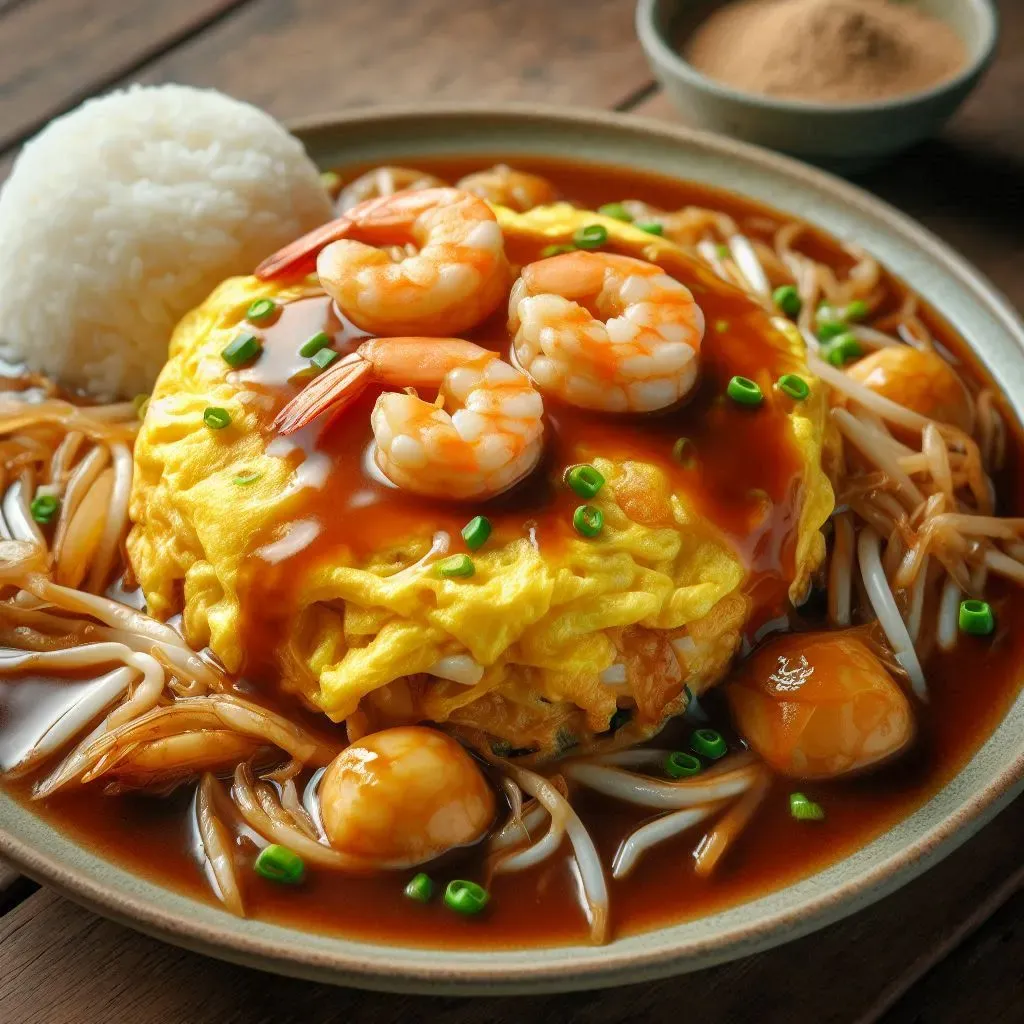
Recommended Articles:
- Taco Bell Breakfast Hours: Ultimate 2025 Guide
- Burger King Menu: In-Depth Guide 2025
- Chipotle Menu: In-Depth Guide 2025
- Taco Bell Menu: In-Depth Guide 2025
- Places to Eat Near Me: Ultimate Guide (2025 Edition)
- Honey Baked Ham 2025 In-Depth Guide
- How to Organize Kitchen Cabinets 2025 In-Depth Guide
- 100 Easy Dinner Ideas 2025 In-Depth Guide
- Easy Dinner Recipes: 2025 In-Depth Guide
- KFC Menu: In-Depth Guide 2025
- Chick-fil-A Breakfast Hours: In-Depth Guide 2025
- 100 Best Milks: A Comprehensive Guide 2025
- 100 Breakfast Ideas: Nutritious Delicious 2025
- 100 Easy Dinner Ideas: Delicious Meals 2025
- Easy Dinner Recipes 2025(In-Depth)
- 100 Quick Dinner Ideas 2025 In-Depth Guide
- Easy Dinner Ideas: 2025 In-Depth Guide
- McDonald Breakfast Hours: 2025 In-Depth Guide
- What Time Does McDonald’s Stop Serving Breakfast 2025?
- Is Fairlife Milk Healthy? 2025 In-Depth Guide
- Creative Spongebob Party Food 2025 In-Depth Guide
- Easy Spongebob Party Food Ideas 2025 In-Depth
- How To Make Canes Sauce 2025 In-Depth Guide


























